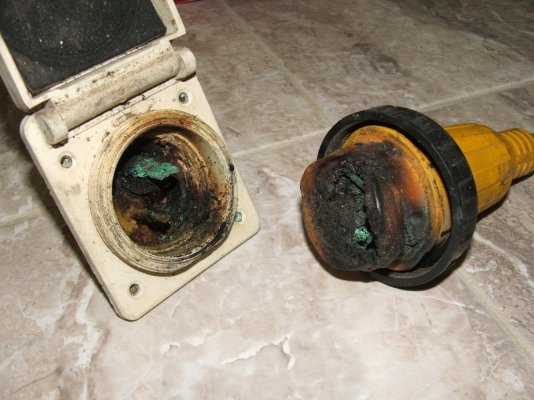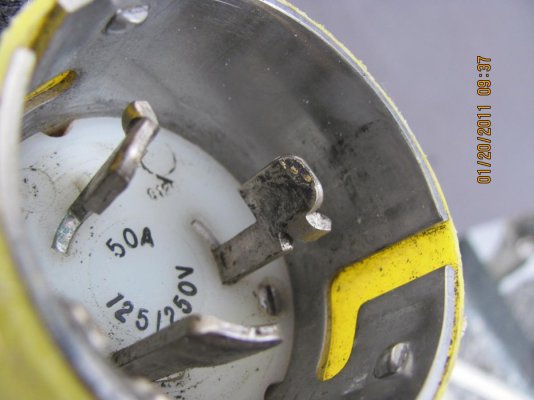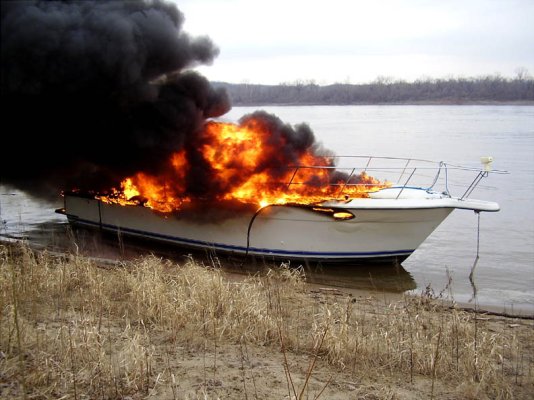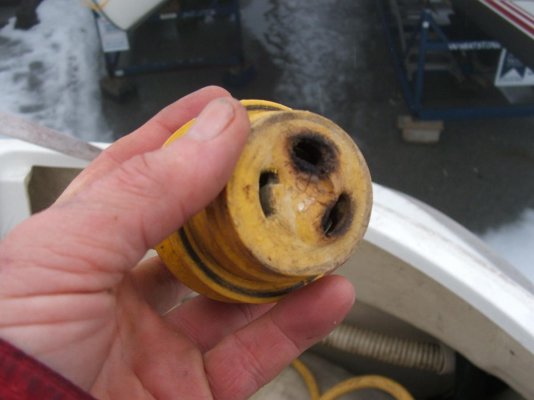JDCAVE;308121[B said:
]The marina has people come by several times a day to check the cords.
[/B]
They do checks at 3.30am!
I think you should buy that bloke a case of beer.
I'm not so sure about the case of beer, they may be responsible for the problem. I'm moored in the lower Fraser River. We've had a damp winter, a lot of fog and high humidity for a couple of months. I had a good look at the receptacles and they are pretty tired, corroded and some burned out. Whether they upgrade the service or not ( and clearly that's a big proposition), they need to have better receptacles.
That these guys do is wander down the dock and jiggle power cords, several times a day. Over time that practice has to cause fatigue. Furthermore, these towers have a covered set of breakers and a covered set of corresponding receptacles. They keep leaving the receptacle door open to the elements and the contacts vulnerable to corrosion.
Jim
Sent from my iPad using Trawler Forum






